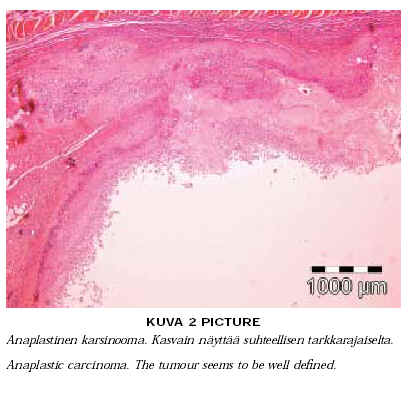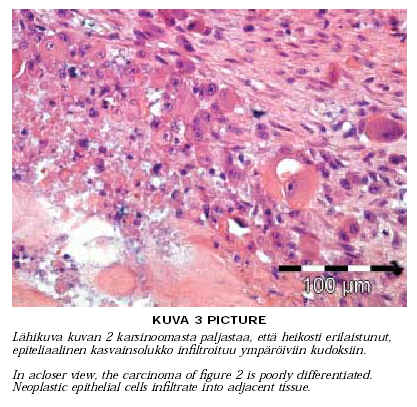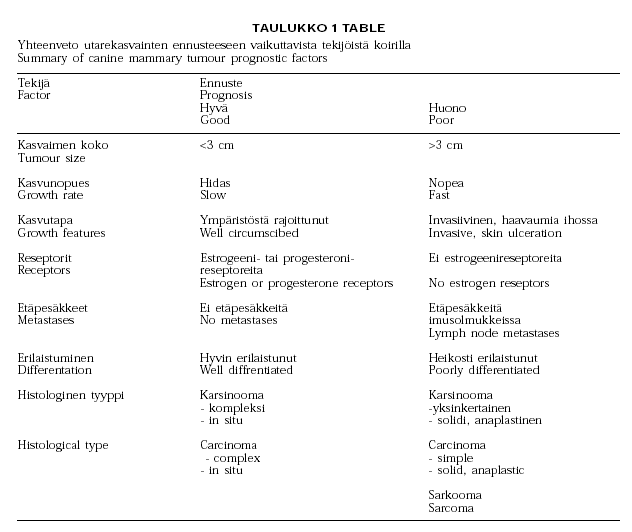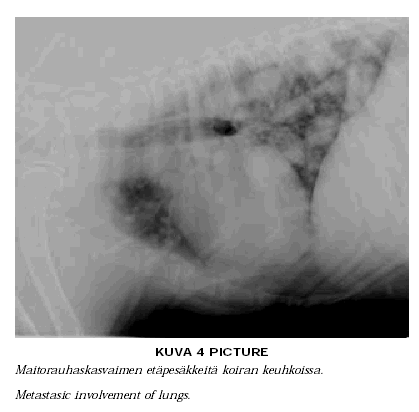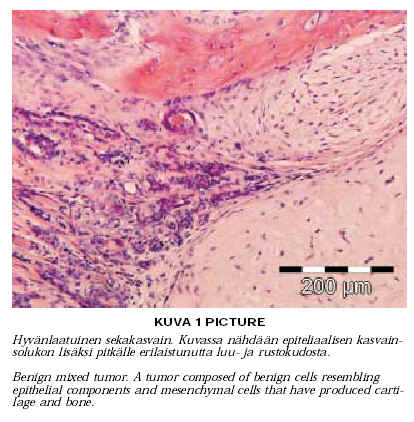
Mammary gland tumours are the most common tumours in bitches in Finland. In cats, they occur less frequently. The risk of developing mammary gland tumours is affected by age, breed, feeding and hormones. The histological tumour type is the most important prognostic factor in mammary gland tumours.
The tumour should be examined by biopsy before surgery or after surgical removal. Fine-needle aspiration is not sensitive for differentiating malignant and benign tumours. About 50% of mammary gland tumours in dogs are benign, whereas in cats 85–93% are malignant. The two most common sites for metastases are regional lymph nodes and lungs. Involvement with lymph nodes has been associated with an increased risk for tumour recurrence. Dogs and cats with a tumour of less than 3 cm diameter have a better prognosis than dogs and cats with a tumour exceeding 3 cm. Clinical staging of patients with mammary gland tumours includes physical examination with thorough examination of all mammary glands, palpation of the regional lymph nodes, thoracic radiographs, complete blood count and urinalysis. The primary treatment for mammary gland tumours is surgical removal. The goal of surgery in canine mammary tumour disease is to remove the tumour completely using the simplest possible procedure. In cats, radical mastectomy is recommended.

